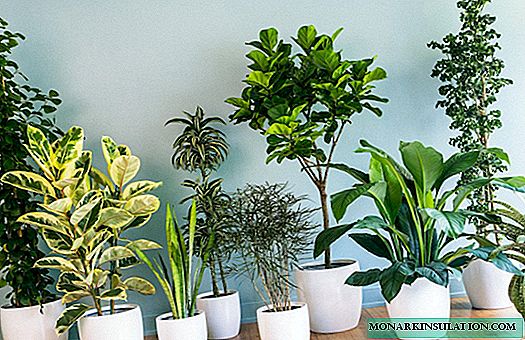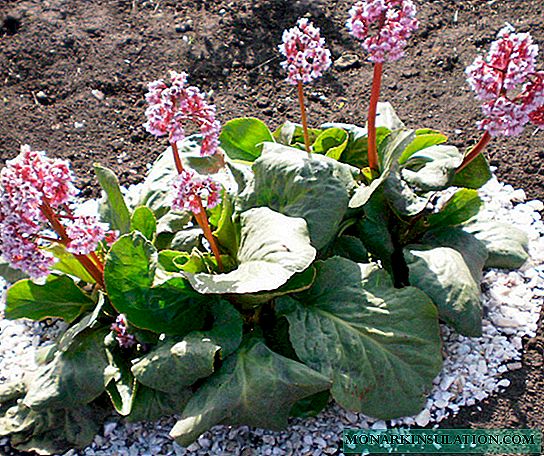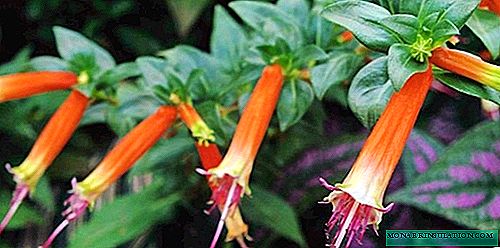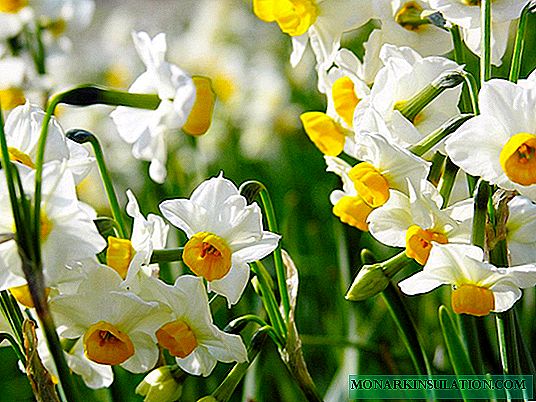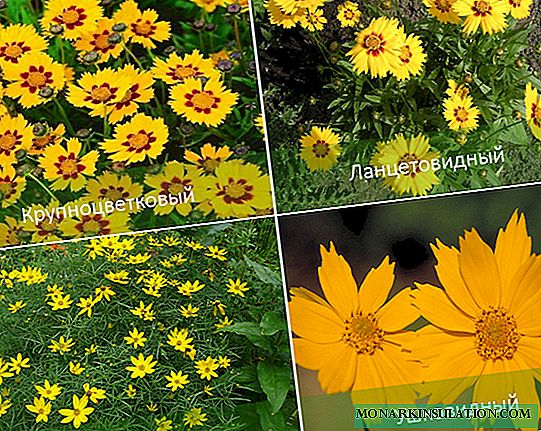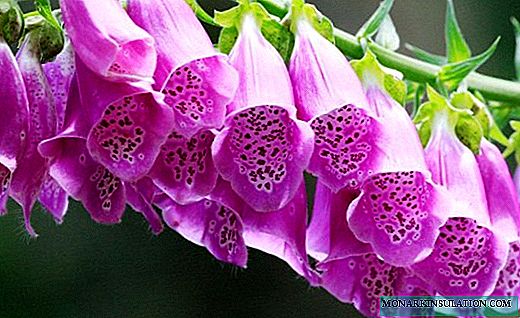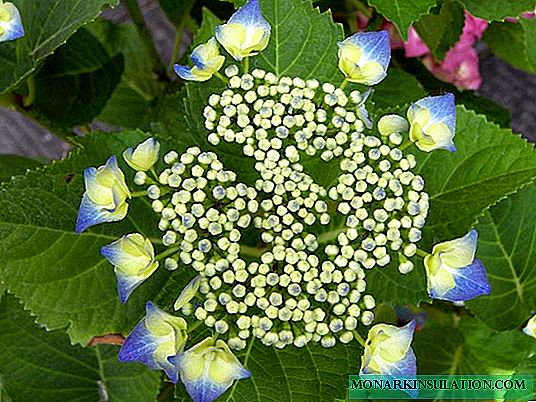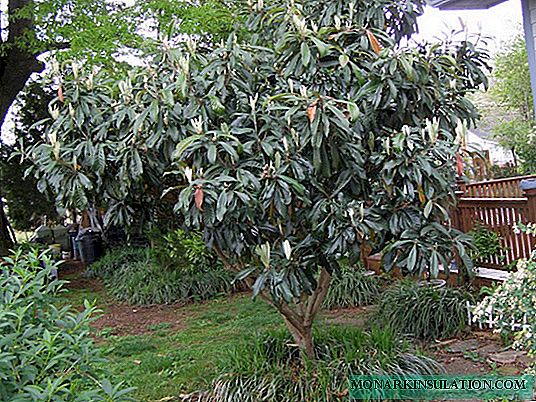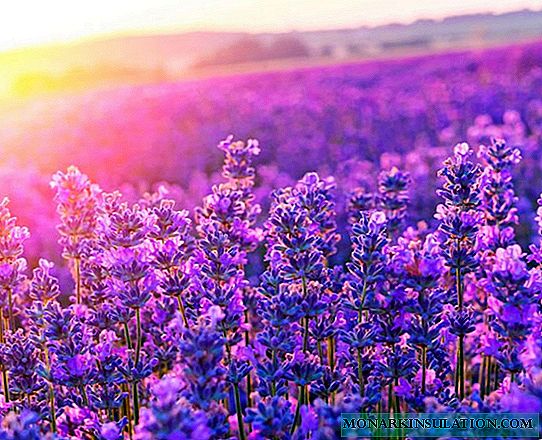
Edible honeysuckle - a particularly valuable and promising berry crop for regions with harsh climatic conditions, long frosty winters and late spring frosts. Its early ripening dark blue berries are tasty and very healthy, they contain many vitamins. This winter-resistant shrub is quite unpretentious and grows well even among beginner gardeners, without requiring special care.
Blue edible honeysuckle - the earliest berry
Bushes of blue honeysuckle with delicious edible fruits are found in the forests of the Urals, Siberia and the Far East. The local population of these regions has long been collecting wild honeysuckle, which ripens very early, even before strawberries. This is the earliest of all berries in a temperate climate and one of the most winter-hardy berry crops, withstanding frosts of -50 ° C in winter and frosts of -7 ° C during flowering.

Edible honeysuckle - an early berry with record frost resistance
Honeysuckle fruits contain many vitamins and other beneficial substances and are considered healing. On wild plants, there are often berries with bitterness, bitterness and some garden varieties, especially in hot, dry weather without watering. The bitter honeysuckle berries make a wonderful jam with a very interesting piquant taste. They are suitable for compotes, including in a mixture with other fruits and berries. They can also be frozen and stored in the freezer. Fresh berries are stored in the refrigerator for no more than three days, then get wet and deteriorate.

From the berries of blue honeysuckle, a very tasty jam is obtained
Despite its many advantages, the blue honeysuckle attracted the attention of breeders very late, only in the middle of the last century. For several decades, it was considered a new exotic horticultural culture, and only by the beginning of the present century it was widely spread among amateur gardeners in Russia and neighboring countries. Edible honeysuckle industrial plantations still do not exist; it is a purely amateurish culture. Outside the borders of the former Soviet Union, blue honeysuckle is almost never found in the wild and is rarely grown in culture.

Edible honeysuckle berries contain many vitamins
The main breeding work on the breeding of new varieties of edible honeysuckle was carried out in Soviet times and continues today in the following scientific institutions:
- Pavlovsk experimental station VIR (Leningrad region),
- VIR Far Eastern Experimental Station (Vladivostok city),
- Siberian Research Institute of Horticulture named after M. A. Lisavenko (Altai Territory, Barnaul city),
- Bakchar stronghold of northern horticulture (Tomsk region),
- South Ural Research Institute of Horticulture and Potato (city of Chelyabinsk),
- All-Russian Research Institute of Horticulture named after I.V. Michurin (Tambov Region, the city of Michurinsk).
Breeders of Moscow, Samara and Nizhny Novgorod worked in small volumes with honeysuckle. Many wonderful honeysuckle varieties were created by amateur breeder Leonid Petrovich Kuminov from the Moscow Region, some of them have already been zoned and entered in the State Register, others are undergoing varietal testing.
Edible and inedible species of honeysuckle
Among the many varieties of honeysuckle, the fruits of only a few closely related species are edible:
- blue honeysuckle,
- Pallas honeysuckle
- Kamchatka honeysuckle,
- Turchaninov’s honeysuckle,
- edible honeysuckle,
- honeysuckle Altai.
All of them are very similar to each other. These are low erect shrubs without thorns, with a height of one to two meters. Edible honeysuckle have a number of common symptoms:
- bloom in early spring immediately after snow melts,
- have pale yellow bell-shaped flowers,
- dark blue fruits ripen at the very beginning of summer, before all other berries.

Edible honeysuckle blooms with pale yellow flowers in early spring.
The vast majority of honeysuckle species have inedible or slightly poisonous fruits of red or orange color ripening in the second half of summer, also popularly known under the collective name "wolf berries". Inedible honeysuckles bloom in late spring or early summer with white or pink flowers.
Edible honeysuckle varieties
In the majority of regions favorable for growing blue honeysuckle, any varieties of this crop grow well. For more southern regions of the country and the monsoon climate of the Far Eastern Primorye, varieties of local selection that are better adapted to them are better suited.
The best varieties of honeysuckle edible by maturity (table)
| Ripening period | Variety Names |
| Early (June 15-19) | Early, Drops, Vitamin, Bell, Tomichka, Blue spindle |
| Medium (June 20 - 25) | Vasyugan, Bakcharskaya, Bluebird, Cinderella, Pitcher-shaped, Amateur, Pavlovskaya, Azure, Leningrad giant, Reliable, Start |
| Late (June 26 - July 5) | Dessert, Kamchadalka |
In the most large-fruited modern varieties of blue honeysuckle, berries reach 4 centimeters in length and weight of 1.5 grams (for comparison, in wild-growing initial forms, berries are about 1 centimeter long and weigh about 0.5 grams). Productivity is from 0.5 to 2 kilograms per bush, depending on the variety, plant age and growing conditions. Fruits do not ripen at the same time and, as they ripen, fall off onto the ground.

Modern varieties of honeysuckle are large-fruited and fruitful.
Edible honeysuckle of the Blue Bird and Blue Spindle varieties grows in my garden in Tatarstan, the seedlings of which my grandfather brought from Moscow in the late eighties of the last century for our garden and for neighbors. In the Blue Bird, the berries are smaller, oval, sweet and sour, almost without bitterness. At the Blue Spindle, the berries are noticeably larger, elongated, slightly more sweet and with a slight bitterness. They ripen at me almost simultaneously in the first half of June. I really like both of these varieties, and the spicy delicacy honeysuckle jam is one of my favorites. Over all these years, my honeysuckle has been repeatedly transplanted and redrawn, and my neighbors have survived at the original planting site and still bear two bushes from the very first importation, one plant of each variety.
Features of growing honeysuckle in the regions
Edible honeysuckle grows well and bears fruit annually in the zone of its natural growth: in the Urals, Siberia and the Far East. Late spring frosts are not afraid of her, and frosty winters with a stable snow cover without thaws are only good for her. Varieties of local selection are ideally suited to the characteristics of a complex regional climate.
Very valuable specimens of this shrub with fruits of excellent quality can be found here among wild plants in the nearest forest, you can take cuttings from them for propagation and grow beautiful seedlings for your garden.

In nature, edible honeysuckle grows in the forests of the Urals, Siberia and the Far East.
The blue honeysuckle took root perfectly in the conditions of the Russian Non-Black Earth Region. It gives annual stable yields of tasty and healthy berries in the Northern, North-Western, Volga-Vyatka and Central regions, in the Moscow Region and throughout central Russia, as well as in the northern part of the Middle Volga.
In Tatarstan, edible honeysuckle grows well and bears fruit annually. The first specimens of this shrub in our area appeared in the eighties of the last century. Now honeysuckle bushes can be found in almost every garden, this is the earliest of all our berries. With us, it does not get sick, is not damaged by any pests, and perfectly tolerates the local climate even in the most problematic years.

Honeysuckle grows well in regions with smooth snowy winters without thaws
Quite favorable conditions for the cultivation of this crop are found throughout Belarus and in Ukrainian Polesie. There is quite humid air and relatively even winters, so almost all varieties of honeysuckle edible of any origin grow well.
It is relatively successful to grow blue honeysuckle in the Samara region of the Middle Volga region, in the Central Black Earth region of Russia and in the forest-steppe zone of Ukraine. Climatic conditions here are already less favorable for this shrub, therefore it is better to choose varieties adapted for the Black Earth created in the city of Michurinsk in the Tambov Region, as well as varieties of Samara selection.

Blue honeysuckle grows poorly south of the Black Earth
With further advance to the south, certain problems arise, methods of sufficiently effective elimination of which have not yet been found. Firstly, edible honeysuckle needs constantly high humidity of air and soil and reacts extremely painfully to the summer heat and drought, characteristic of the southern regions. Secondly, this shrub has a very short rest period. During long winter thaws that occur in the south almost every year, the honeysuckle buds wake up and start growing, and then die when frost returns. The lingering warm autumn, usual for the southern regions, also provokes premature awakening of the buds and even flowering of honeysuckle. After such untimely autumn flowering, the berries do not have time to ripen due to the inevitably coming cold weather. All this greatly weakens the plants and contributes to their premature death. As a result, in the southern regions, a normal honeysuckle crop is becoming extremely rare.
For the steppe zone of Ukraine, Crimea, the Lower Volga region and most of the territory of the North Caucasus region of Russia, the cultivation of blue honeysuckle is very problematic and has no practical meaning. Certain areas with a microclimate that is relatively acceptable for this berry shrub can be found in the mountain and foothill regions of the North Caucasus, especially on the northern slopes, including in the mountainous part of the Stavropol and Krasnodar Territories.
The main stages of growing honeysuckle and caring for it
Edible honeysuckle is one of the most unpretentious and undemanding berry crops in temperate climates. Its cultivation is available even to the most inexperienced beginner gardeners.
Honeysuckle planting
Blue honeysuckle is a very long-lived shrub that can bear fruit for up to twenty years or more. Her young bushes are relatively easy to tolerate transplant, but older plants are better not to disturb. In the spring, she wakes up very early and starts to grow, therefore, it is necessary to plant and transplant the honeysuckle in the fall, no later than a month before the onset of steady colds.
Only seedlings grown in containers with a closed root system can be planted as an exception in spring or summer.
Honeysuckle soil and choice of landing site
Edible honeysuckle grows well on any soil, except wetland and too heavy. Acidity of the soil is acceptable in the range of pH 4.5 - 7.5 with an optimal pH of 5.5 - 6.5.

The acidity of the soil for honeysuckle is acceptable in the range of pH 4.5 - 7.5 with an optimal pH of 5.5 - 6.5
To obtain abundant harvests of berries, blue honeysuckle is best planted in open sunny areas, although it can grow in partial shade and even on the northern slopes.
My honeysuckle grows in a high place with very light sandy soil and in hot, dry summers it requires constant watering, even in partial shade. My girlfriend has a garden plot on the same sands, but in a more humid lowland closer to the lake, and she almost does not water her honeysuckle.
Selection of pollinators and placement of honeysuckle plants on the site
Edible honeysuckle needs mandatory cross-pollination, so at least two different varieties of it should be planted on the garden plot. If there are three, four or more varieties, the yields of berries will be even higher. Almost all cultivars of blue honeysuckle are inter-pollinated among themselves. The main pollinators of honeysuckle are bumblebees; there are still few bees at this time.

Bumblebees - the main pollinators of honeysuckle
Groups of several bushes planted nearby are more attractive to bumblebees and are better pollinated than individually located plants. To obtain high yields of berries, the distance between the bushes should be at least two meters. You can use the blue honeysuckle to create hedges by placing the plants in a row a meter from one another, but the yield from each individual bush during such planting will be lower.
Honeysuckle compatibility with other plants
Edible honeysuckle tolerates the neighborhood of most garden plants. You can not plant it only under large trees with a dense crown, giving a solid shadow, and under excessively dry birch soil.

In openwork penumbra under birch, honeysuckle will suffer greatly from a lack of moisture in the soil
When planting on a lawn around each honeysuckle bush, it is necessary to keep an under-trunk circle with a diameter of not less than a meter mulled with gravel, wood chips, pine bark or nutshell. The roots of lawn grasses, as well as perennial weeds, have a depressing effect on the root system of honeysuckle.
Of the other berry bushes, blue honeysuckle has the most similar requirements to blackcurrant, they can be planted nearby. Both of these crops love moisture and, if necessary, put up with light partial shade, although higher yields are given in full sunlight throughout the day.

Blackcurrant is a good neighbor for edible honeysuckle
Honeysuckle landing on video
The procedure for landing:
- Dig a small hole in the bayonet of a shovel and pour half a bucket of water into it.
- When the water is absorbed, pour a little good fertile soil to the bottom.
- Place the honeysuckle seedling in the prepared hole.
- Fill the roots with soil so that the seedling is at the same depth relative to the soil surface as it grew in the nursery.
- Carefully pour another half a bucket of water from the watering can with a sprayer under the planted bush.
Watering honeysuckle, mulching the soil and weed control
Edible honeysuckle makes high demands on soil and air humidity. In hot, dry weather, the yield decreases markedly, the berries grow small and often begin to bitter even in sweet-fruit varieties. Therefore, in the absence of rain, it is necessary to water once a week in a bucket of water for each young plant, or two or three buckets of water for a large adult bush. Good results occur when using drip irrigation systems.
Mulching the surface of the earth under the bushes with any improvised materials (organics, gravel, a special mulching film) will help preserve moisture in the soil and avoid weeds. Large powerful weeds are especially dangerous for young specimens of honeysuckle and can completely drown them in the absence of timely regular weeding. Herbicides on honeysuckle plantings are best avoided.

Mulching helps maintain moisture in the soil and inhibits weed growth
If you do not use mulching, then after each watering the surface of the earth under the plants needs careful shallow loosening five to seven centimeters in depth. Deep digging under the bushes of honeysuckle is dangerous due to the possible damage to surface roots.
Honeysuckle top dressing
The first two to three years after planting, blue honeysuckle does not need additional fertilizing.In the future, plants are fed annually in the spring, evenly distributing fertilizers over the entire area of the trunk circle.
Fertilizer rates for large adult bushes of edible honeysuckle (calculation for 1 plant):
- 40 grams of ammonium nitrate,
- 30 grams of superphosphate,
- 20 grams of potassium salt.
Mineral fertilizers can be replaced with a bucket of well-decomposed humus or compost. For younger plants, the dosage of fertilizers is reduced by two to three times.
Honeysuckle pruning
Relatively young (younger than ten years of age) edible honeysuckle bushes can not be pruned at all. There is no need for post-plant pruning of seedlings. Young specimens of honeysuckle grow well and form a crown without the intervention of a gardener, and unsuccessful pruning can only delay fruiting and reduce the yield of berries.
Old honeysuckle bushes can be rejuvenated to extend the fruiting period by a few more years. To do this, thin out the bushes. The first step is to cut out all dried and broken branches, as well as lying on the ground. Then remove some of the oldest large branches in such a way that there is a place for the emergence of new powerful shoots.

Old honeysuckle bushes thin out for rejuvenation, removing part of the branches
My neighbors still bear two huge thirty-year-old honeysuckle bushes annually, periodically subjected to light anti-aging pruning.
Honeysuckle breeding
Blue edible honeysuckle is very easily propagated by seeds and vegetatively.
Honeysuckle propagation by cuttings
Green cuttings are the most popular, reliable and affordable way to propagate edible honeysuckle, which allows you to fully preserve all the valuable qualities of the original variety. Procedure for grafting:
- After the collection of berries is finished, cut off the young shoots of the current year from the best harvested honeysuckle bushes at the time of their growth and the very beginning of lignification.
- Cut the cut shoots into cuttings with two pairs of leaves and buds on each.

The lower leaves of chopped cuttings must be carefully removed
- Gently cut the bottom pair of leaves with a razor.
- Insert the cuttings with the lower end into a cold unheated greenhouse in partial shade filled with a mixture of sand and peat.

Prepared cuttings are planted in a mixture of peat and sand
- Cuttings regularly watered, preventing drying of the soil.
- When the cuttings take root and give new shoots, it is necessary to begin to ventilate the greenhouse daily, gradually accustoming young plants to the open air.
- Next spring, you can transplant the seedlings to a permanent place in the garden.
I have repeatedly grown edible honeysuckle from green cuttings, cut at the very end of June. The soil in my garden is sandy, so I just stuck the freshly cut cuttings into the prepared bed in partial shade and covered each stalk with a liter glass jar. I have never used any root stimulants. The survival has always been one hundred percent, not a single honeysuckle stalk has died from me. The first flowers and berries on seedlings obtained from cuttings appeared in the third year.
Honeysuckle propagation by seeds
Edible honeysuckle seed propagation is used only for breeding purposes when creating new varieties. The procedure is as follows:
- Rinse seeds from fully ripened berries thoroughly with clean water and dry.
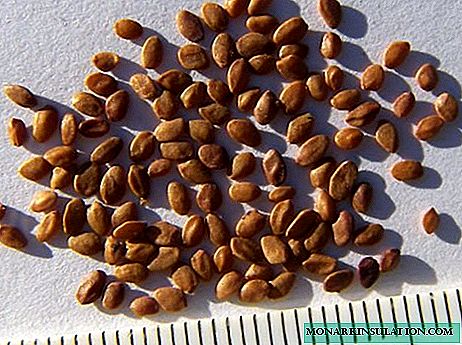
Honeysuckle seeds are extracted from fully ripened berries.
- In late autumn, soak the seeds in water for a day.
- Soaked seeds should be stratified in slightly moist peat or sand at a low positive temperature in the refrigerator for a period of two to four weeks.
- Sow stratified seeds in boxes with a mixture of peat in half with sand to a depth of half a centimeter.
- Keep crops at room temperature and constant watering, preventing drying of the soil.
- Shoots will appear in three to four weeks.
- Seedlings should be regularly watered and kept in a bright place.
- The grown seedlings should be planted from common boxes in separate pots, and at the beginning of summer planted in open ground.
In amateur gardening, seed reproduction of honeysuckle is not used, since the bulk of the resulting plants will have small bitter fruits of mediocre quality.
Honeysuckle treatment for diseases and pests
Edible honeysuckle very rarely suffers from pests and diseases. In most cases, during its cultivation, it is possible to do without any chemical treatments at all, which makes it possible to obtain a particularly valuable environmentally friendly crop.
From the beginning of flowering to the end of the collection of berries, any treatment of honeysuckle with pesticides is strictly prohibited.
Pests and diseases of honeysuckle and control measures (table)
| Title | Description | What to do with it |
| Leaf Mosaic Virus | Yellow or pale green stripes and spots appear on honeysuckle leaves | Viral diseases are incurable, affected plants must be uprooted and burned immediately |
| Fungal diseases | Brown-brown spots appear on the leaves of the honeysuckle, the affected leaves gradually dry. The disease usually appears in the second half of summer | Sprinkle bushes with penconazole (Topaz preparation) before flowering and after harvest |
| Acacia false shield | Swollen brown plaques on honeysuckle branches | Sprinkle the bushes with malathion (Actellik, Alatar preparations) before flowering and after harvest |
| Spider mite | Honeysuckle leaves are covered with pinpoint injections and when severely damaged, they dry out. On the leaves and shoots, a barely noticeable cobweb and very small mites of red or brown color | |
| Aphid | On the leaves and young shoots of honeysuckle, small insects are black, gray or green. With a large number of aphids, the leaves on the tops of the shoots curl | Spraying against the spider mite and false shields is also effective against aphids. If other pests, except for aphids, were found, then highly toxic malathion is better to replace with less toxic cypermethrin (Inta-Vir, Kinmix preparations) |
| Honeysuckle Fingerfly | Honeysuckle fingerworm caterpillars feed on honeysuckle berries. Infected berries bend, ripen prematurely and fall off | Collect and burn infected berries with pests |
| Blackbirds | In some regions, thrushes feed on honeysuckle berries. A flock of blackbirds can leave the bushes without crops in a few minutes | Where there are many blackbirds, during the ripening period of the berries, cover the honeysuckle bushes with a protective net from birds |
Pests and diseases of honeysuckle (photo gallery)
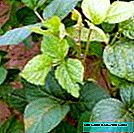
- Leaf mosaic virus appears as pale spots and stripes on leaves

- Fungal diseases of honeysuckle appear brown spots on the leaves in the second half of summer
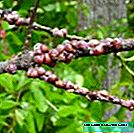
- Swollen growths on the branches - this is how an acacia false scutellum looks like
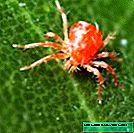
- Spider mite - a very dangerous pest that causes leaf drying

- Aphids cause twisting of young leaves on tops of shoots
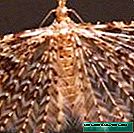
- Honeysuckle fingerworm caterpillars feed on honeysuckle berries

- Blackbirds - gluttonous lovers of berries
For thirty years, I have never observed any pests and diseases, neither on my honeysuckle bushes, nor on my neighbors. Even our local thrushes, each year swarms of hieruschids and cherries, have not yet tried the blue honeysuckle, although the neighboring bushes of the honeysuckle grow very close to my huge bush of the hiergeon. Apparently, the reason is much earlier ripening of honeysuckle - our blackbirds just have not yet seen that in early June there is already food in that corner of the garden. The invasion of these voracious birds begins in July closer to July, when the whole honeysuckle has long been collected and eaten.
Reviews
I love honeysuckle because it is the first berry in the suburbs, from June 10-15 you can enjoy its berries. Unpretentious, very winter-hardy, but what a useful one!
Mandrake//www.forumhouse.ru/threads/17135/
We have three varieties of honeysuckle, we just bought different varieties, we tried and it turned out, one sweet variety, the second bitter, the third sour. And the cooking is sooooo tasty it turns out, if there are any berries at all, since everything is eaten up in a swoop. The bushes have been freezing for 5 years.
Nata2705//www.nn.ru/community/dom/dacha/?do=read&thread=2246456&topic_id=49810913
Varieties of darkness, I have the Cote d'Azur, Bluebird, Pendant, Blue spindle and some sort of sortless. Although these bushes already forgot where which. All differ from each other in terms of ripening, taste, size of berries, their shape and color. The shadow is bad for the crop, she needs the sun. And to plant at least two varieties, for better pollination, but diseases have not been noticed so far. It grows by itself, but the first 2-3 years are very slow.
grandson of Michurin//dacha.wcb.ru/lofiversion/index.php?t8148.html
My blue spindle is growing, bitterness is present. In different weather years, it is more or less pronounced. My other grade is Kamchadalka, a bit sweeter, but you can also notice a slight bitterness. I have nothing more to compare with; I have not tried other varieties.
Vaska//www.websad.ru/archdis.php?code=131378
I grow almost 30 years. Perhaps I have the most unpretentious culture. Morozov is not afraid at all, spring frosts, too. He does not like warm autumn (begins to bloom) and the deepening of the root neck (though I have all the bushes - seedlings), and she is also very fond of mountain thrushes (if given the opportunity, they are peeled clean).
sade//forum.homecitrus.ru/topic/11243-zhimolost-sedobnaia/
Honeysuckle is an interesting culture! Fruits four adult shrubs. Berries are harvested 7-10 days earlier than Victoria. Therefore, there are not many of them - they always go off with a bang. In this regard, increased the number of bushes from four to fourteen. He does not like warm winters. It starts moving and as a result it can be partially damaged.
Andrey from Kazan//forum.vinograd.info/showthread.php?t=13143
Due to its unpretentiousness and record winter hardiness, blue edible honeysuckle is one of the most valuable and promising berry crops for the central, northwestern, northern and eastern regions of Russia. Unfortunately, due to its natural biological characteristics, this wonderful shrub is very difficult to adapt to the conditions of the southern climate. Attempts to grow edible honeysuckle south of the Black Earth region are extremely rare.











